ER Diagram DBMS UGC NET CSE
| Q1➡ | NTA UGC NET June 2021 A company is consuming parts in the manufacturing of other products. Each of the part is either manufactured within the company or purchased from the external suppliers or both. For each part, part_number, part_name is maintained. Attribute batch_number is maintained if the consumed part is manufactured in the company. If part is purchased from external supplier, then supplier name is maintained. Which of the following constraints need to be considered when modelling class/subclass concepts in ERD for the given problem. |
| i ➥ Disjoint constraint only |
| ii ➥ Partial participation and disjoint constraints |
| iii ➥ Partial participation |
| iv ➥ Total specialization and overlapping constraints |
| Answer – IV Explanation: Disjoint Constraint • A disjoint constraint requires that Higher level entity set belong to only one lower-level entity set. • For example, an account entity can be either a savings account or a current account , but cannot be both. Here account is higher level entity and saving account , current account are lower level entities. 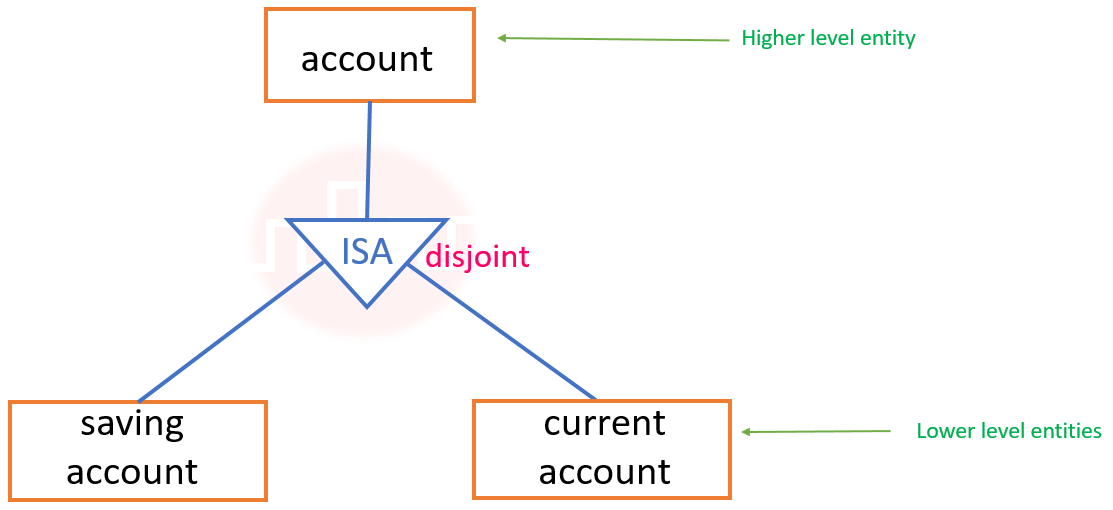 Partial Participation • It is not based on Generization/ Specialization. • The entity in the entity set may or may not participate in the relationship. • Suppose employee entity manages department entity. Here, manages is a relationship between employee and department. Not every employee manage department only manager manages department. So, participation of employee entity is partial.  Total Specialization • Each higher-level entity must belong to a lower-level entity set. • For example, employee must be either teaching faculty or non-teaching faculty or both . Here, employee entity must belong to Lower level entity. 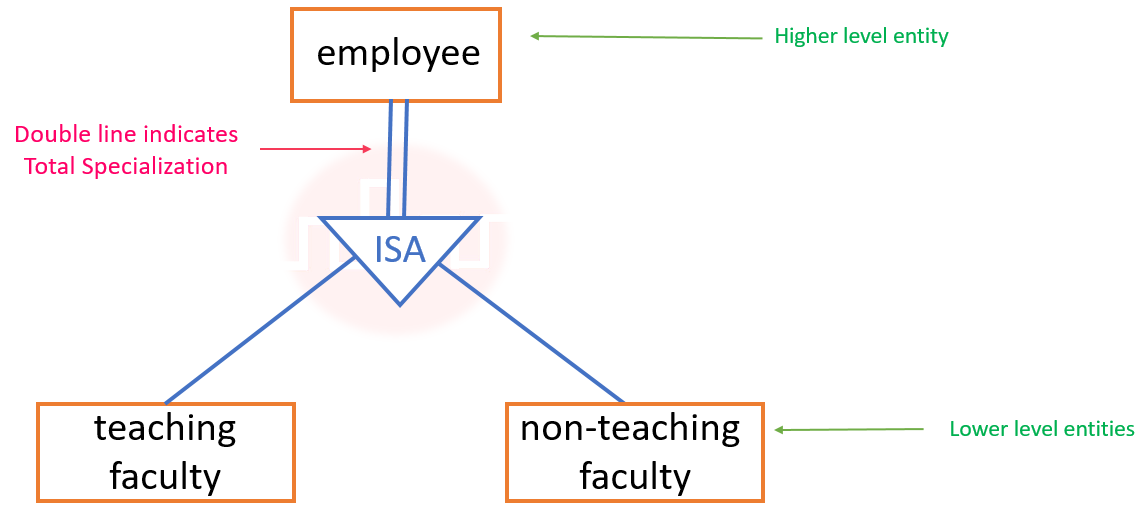 Overlapping Constraints • In overlapping Constraints, the same Higher level entity may belong to more than one lower-level entity set. • For example, person entity may belong to both customer entitity and employee entity. 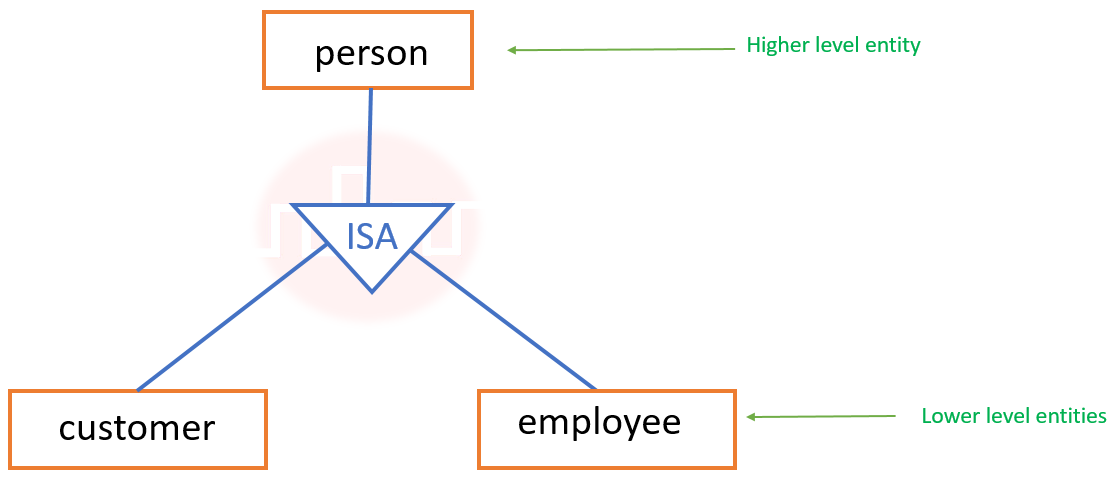 Now come to the question to understand, • One of the Line of question: Each of the part is either manufactured within the company or purchased from the external suppliers or both.point1: part entity either belong to one of the lower level entity or more than one lower level entity. Therefore, Overlapping Constraints need to be considered. point2: part entity must belong to either of the lower level entity. Therefore, Total specialization need to be considered. So, Option(IV) is correct. |
Q2➡ | NTA UGC NET November 2020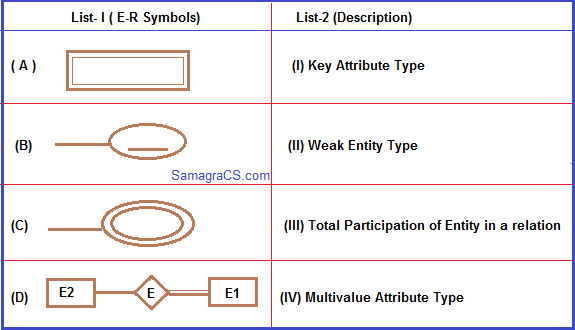 E-R Diagram Notation Choose the correct answer from the options given below: |
| i ➥ A-II, B-IV, C-III, D-I |
| ii ➥ A-IV, B-I, C-II, D-III |
| iii ➥ A-II, B-I, C-IV, D-III |
| iv ➥ A-III, B-IV, C-I, D-II |
| Answer – III Explanation: E-R Diagram Notation: 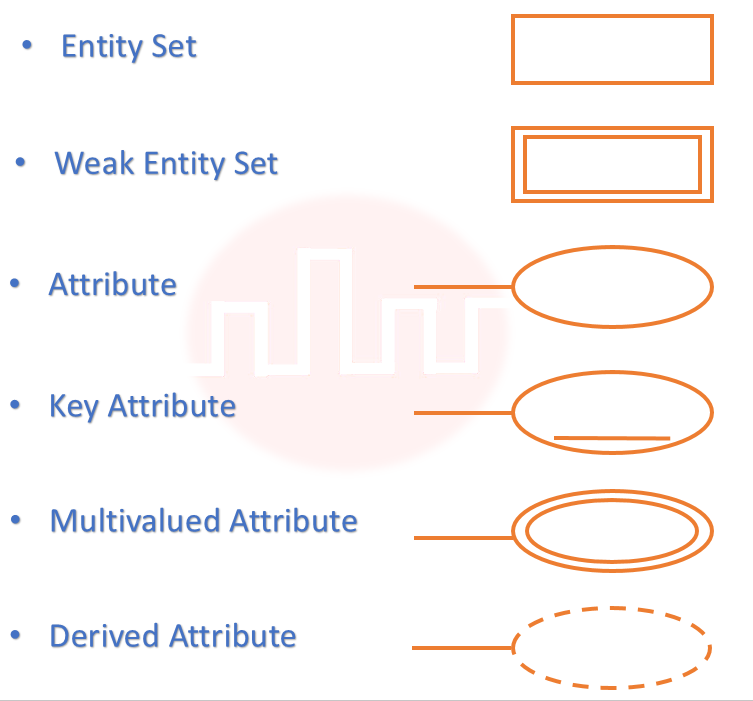 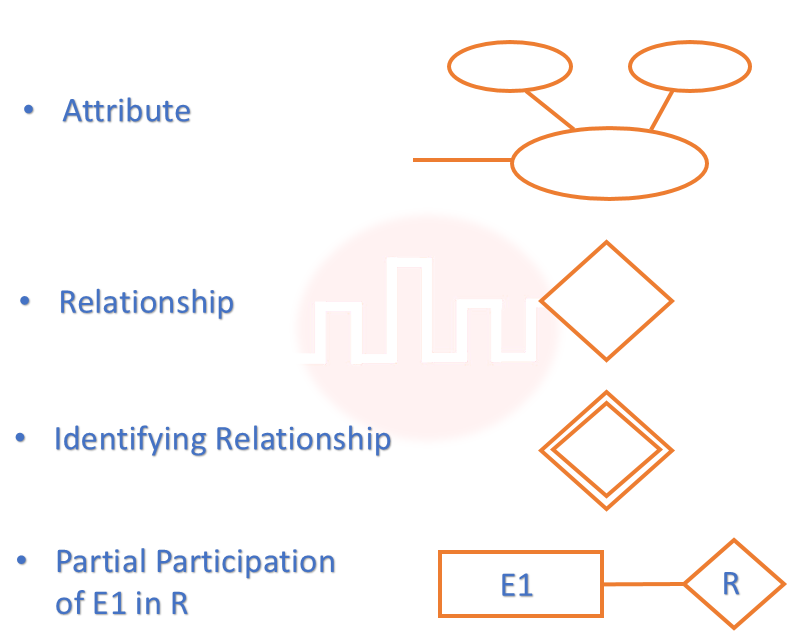  So, Option(III) is correct. |
| Q3➡ | UGC NET July 2016 Paper-III The Global conceptual Schema in a distributed database contains information about global relations. The condition that all the data of the global relation must be mapped into the fragments, that is, it must not happen that a data item which belongs to a global relation does not belong to any fragment, is called: |
| i ➥ Disjointness condition |
| ii ➥ Completeness condition |
| iii ➥ Reconstruction condition |
| iv ➥ Aggregation condition |
Show Answer With Best Explanation
| Q4➡ | UGC NET July 2016 Paper-III Which one of the following pairs is correctly matched in the context of design? 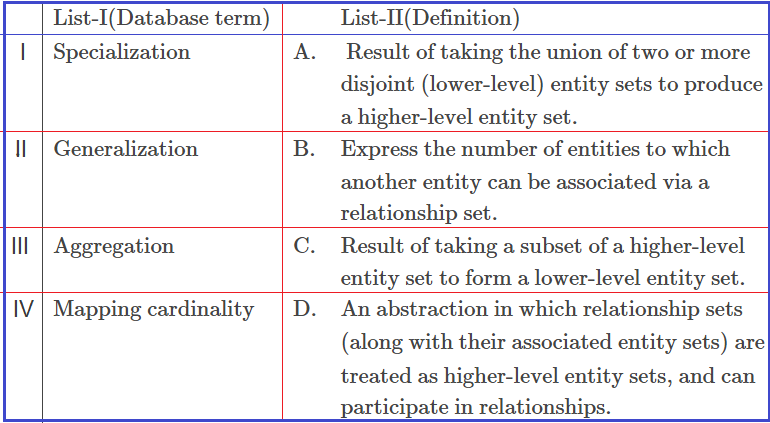 |
| i ➥ A I-D, II-A, III-B, IV-C |
| ii ➥ I-D, II-C, III-B, IV-A |
| iii ➥ I-C, II-D, III-A, IV-B |
| iv ➥ I-C, II-A, III-D, IV-B |
